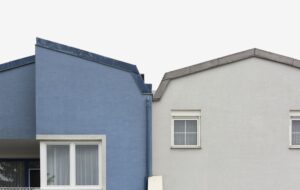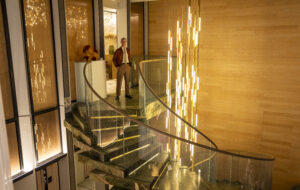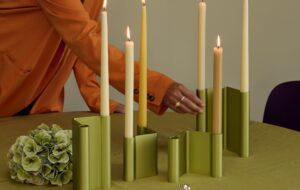|
|
||
|
In an age of terror alerts, “preparedness” and paranoia, the Center for Land Use Interpretation, a Los Angeles-based research organisation specialising in human geography, has documented the shadowy, unreal world of southern California’s emergency service training sites. Another architecture is rising in the expanding landscape of preparedness. Emergency services are increasingly building condensed simulacra of urban environments where they can practise responding to crises and disasters. These training grounds include mock hazardous material (hazmat) spills, train wrecks, building collapses, fires, and debris-strewn landscapes. The police contend with robberies, hostage situations, looting, riots and snipers in mini Main Street environments called tactical training sites, situation-simulation villages, or “Hogan’s Alleys”. Live weapons or small dye-filled simunition rounds complete the realism of the scenario. Whether they are made for police or fire departments, these training sites are stylised versions of ordinary places, with the extraordinary horrors of the anticipated future applied to them on a routine basis. In disaster situations, from car accidents to riots to earthquakes to terrorist attacks, when order breaks down, the worlds of police, fire departments and the military merge to become the reigning order – the emergency state. Training sites like these help us to understand that world.
Edward M Davis Training Center, The Edward M Davis Emergency Vehicle Operations Center & Tactics/Firearms Training Center, located next to the 405 Freeway in Granada Hills, opened in 1998 and is the most elaborate of the three LAPD training facilities. Much of the site is occupied by the 4.4 miles of vehicle training track of the LAPD’s emergency vehicle operations course (EVOC), which is used to teach driving techniques. One of only two large EVOCs in southern California, the Ed Davis facility has two skid pans, a collision avoidance simulator, an inner-city street grid and a high-speed track with blind driveways, sharp turns and elevation changes. The 137,000sq ft main building has electronic driving simulators, offices, classrooms, firing ranges, and a maintenance garage for EVOC vehicles. Located between the main building and the EVOC is the situation-simulation village, which is used by officers for advanced training, and for the production of training videos. Trainees use simunition and are fully protected with face shields and vests. Del Valle Training Center, The Fire Department of Los Angeles County has five training sites: the department headquarters and command centre on Eastern Avenue, known as “the Hill” (an area that is also the sheriff’s command centre); a site in Pomona used for recruit training; a north county training centre in Lancaster, with the county’s only active live fire tower; a classroom site in La Quinta; and the Del Valle Training Center, near Castaic, the largest and most diversified fire training prop site in the LA region. Del Valle is located on a hilltop and uses 160 acres of land that the county bought from oil company Unocal in 1984. Much of the focus of Del Valle is technical rescue training. There are industrial props (including a portion of an oil refinery), vehicle accident props (including propane-powered bus collisions and a collapsed building prop), concrete slab cutting props, shoring training props, confined space rescue props, and other urban search and rescue facilities. There is also a hazmat training area with railcars and a chemical storage building, and a fire extinguisher training area. Police Academy, The Police Academy site in Elysian Park is the LAPD’s historic classroom and firearms training area. It was established in the late 1920s as a private shooting range for officers and evolved into the LAPD’s main training campus for over 50 years. Several years ago, most recruit training moved to the new Ahmanson Recruit Training Center in Westchester, and now the academy is used just for continuing police education, officer training and graduations. The academy grounds include a swimming pool, rock garden, gymnasium, athletics field, classrooms, three firing ranges, two electronic simulation training rooms and two outdoor tactical training areas. The hillside situation-simulation village was built in 1975 with help from Universal Studios volunteers. A continuous search scenario can be played out from one end of the complex to the other. Only simunition is used. The other tactical training area, located between two shooting ranges, is the practical combat range. This is a small “Hogan’s Alley”-type facility (a name which comes from the FBI’s training town in Virginia), with a number of alleys and corridors that terminate at fixed and moving targets. Live ammunition can be used here, and there’s a large bullet trap consisting of piles of shredded tires, faced by a painted rubber mat. It was improved and modified after the notorious 1997 North Hollywood shoot-out, which involved bank robbers with unprecedented firepower and armour. |
Image CLUI photo archive
Words CLUI |
|
|
||
|
|
||

















